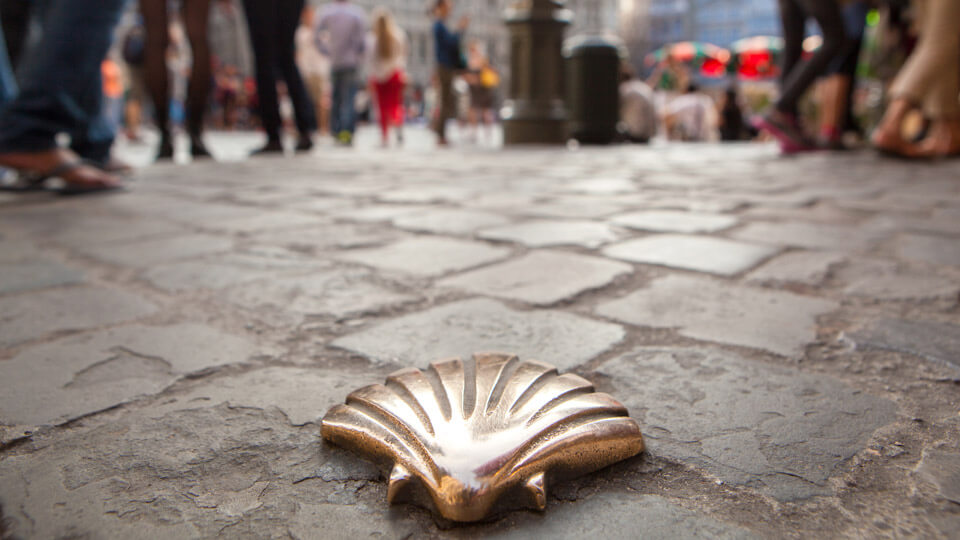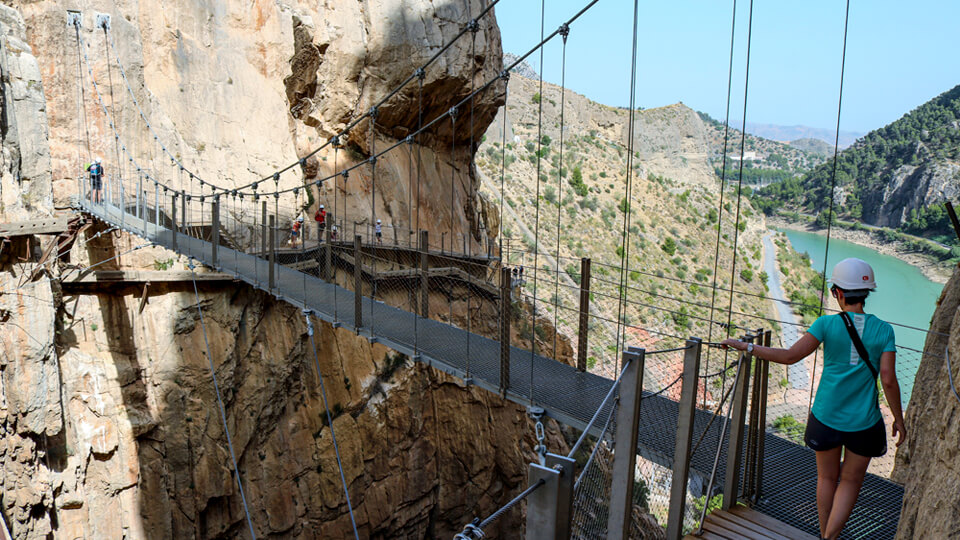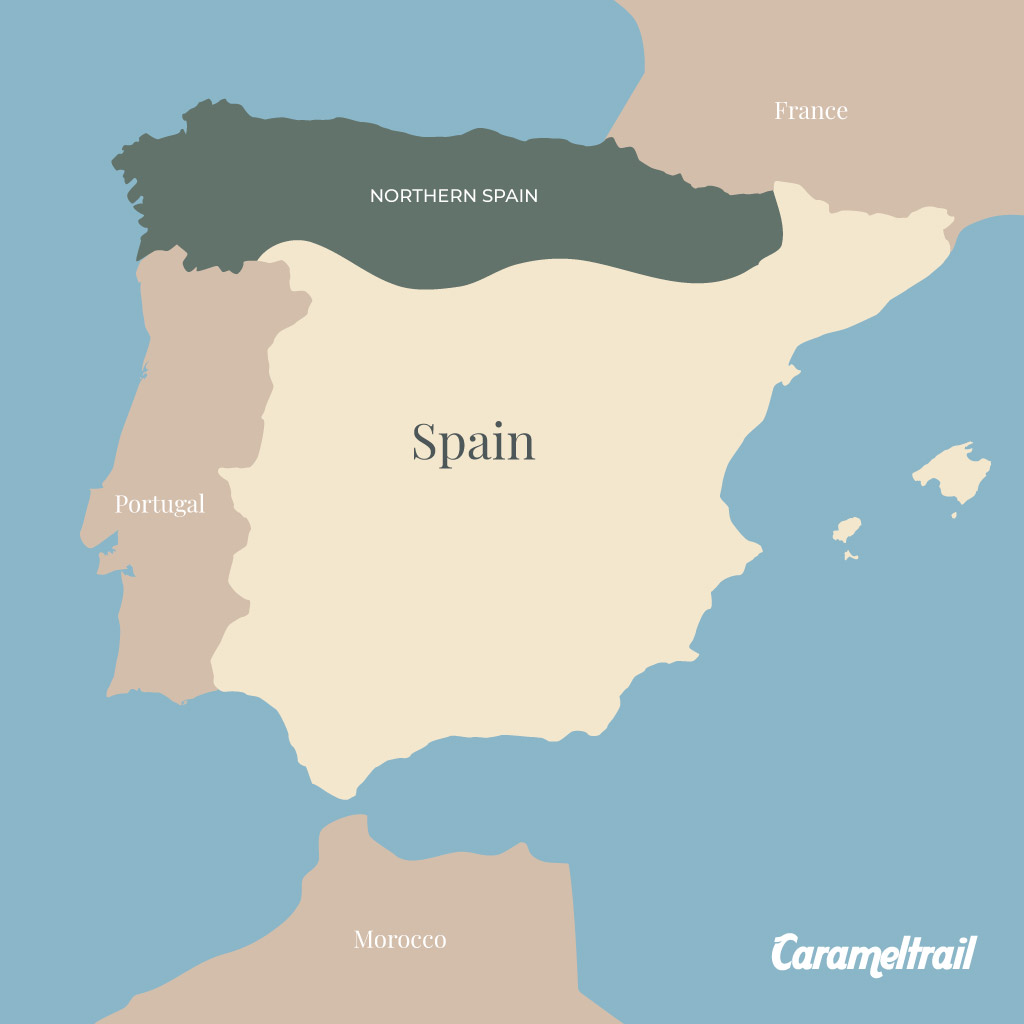
Being a peregrino: Day trip to the Way of St James
The Camino de Santiago or the Way of St. James, is the pilgrimage to the Cathedral of Santiago de Compostela in north-western part of Spain, where the remains of the apostle Saint James were found in the IX century.
For the pilgrim traveler, the growth and the joy of this route lay in the journey itself. This is because the more difficult the journey is, it becomes meaningful and it helps you grow!
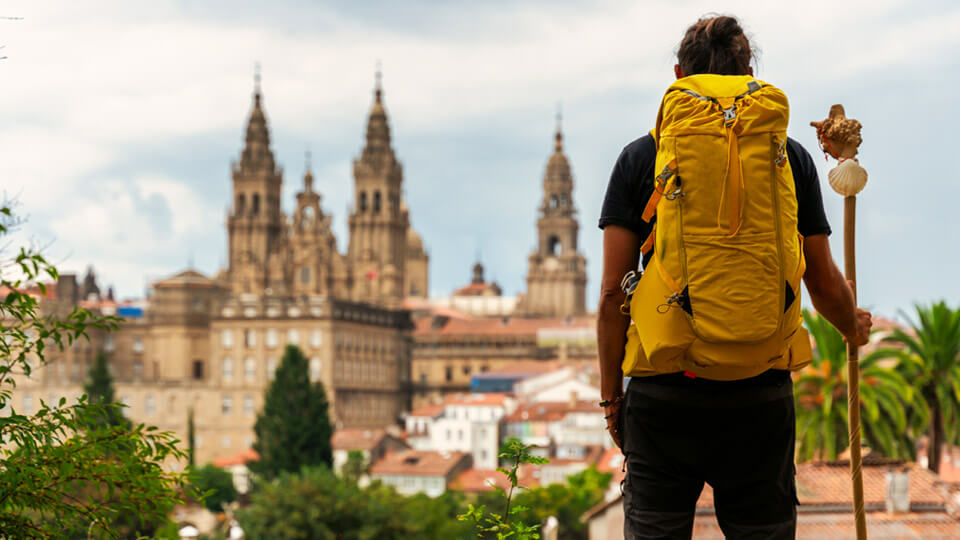
CHOOSE THE WAY OF ST JAMES
The “Way of St James” or the Camino de Santiago includes many Christian pilgrimage routes where people come from various places in Europe to the cathedral of Santiago de Compostela in Galicia. Only to Rome do more pilgrims travel in a year.
Recently, walking the Way of St James had a revival among tourists and pilgrims alike because not all tourists that are on The Way are doing it for religious purposes.
The Way of St James is the route that pilgrims followed for more than 1,000 years to visit the tomb of the Apostle in Santiago de Compostela
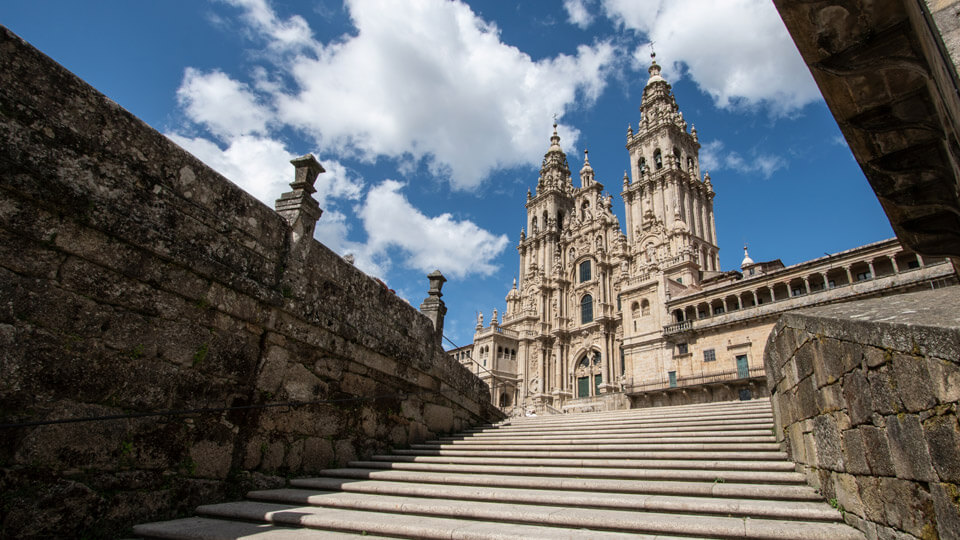
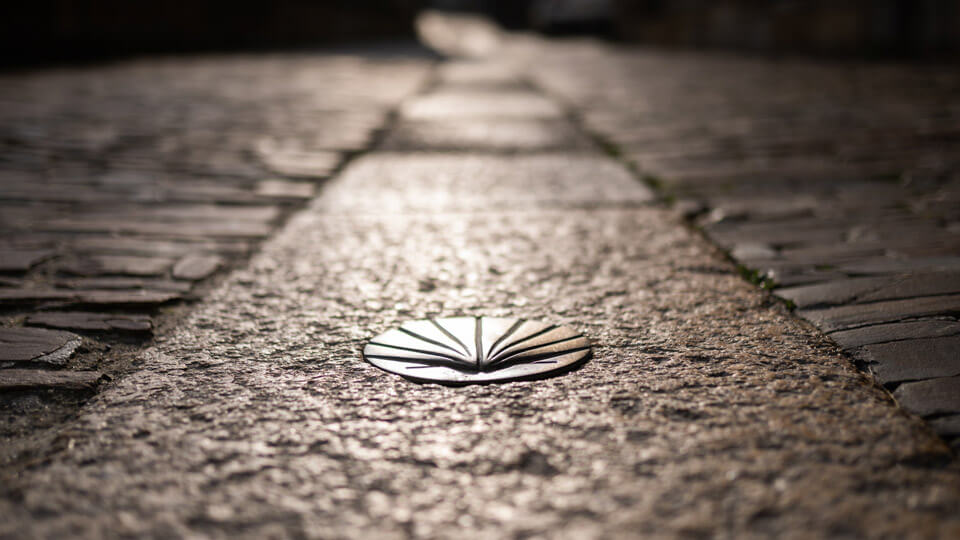
THE MEANING OF “EL CAMINO”
“El Camino” is a Spanish word that means “the way” in English. Many people may know it for its relation to the Camino de Santiago, or The Way of Saint James, the most important pilgrimage in northern Spain. Figuratively this word means “path” or “course”.
It refers to the network of paths that are the Way to the tomb of St James in Santiago de Compostela, the resting place of Saint James.
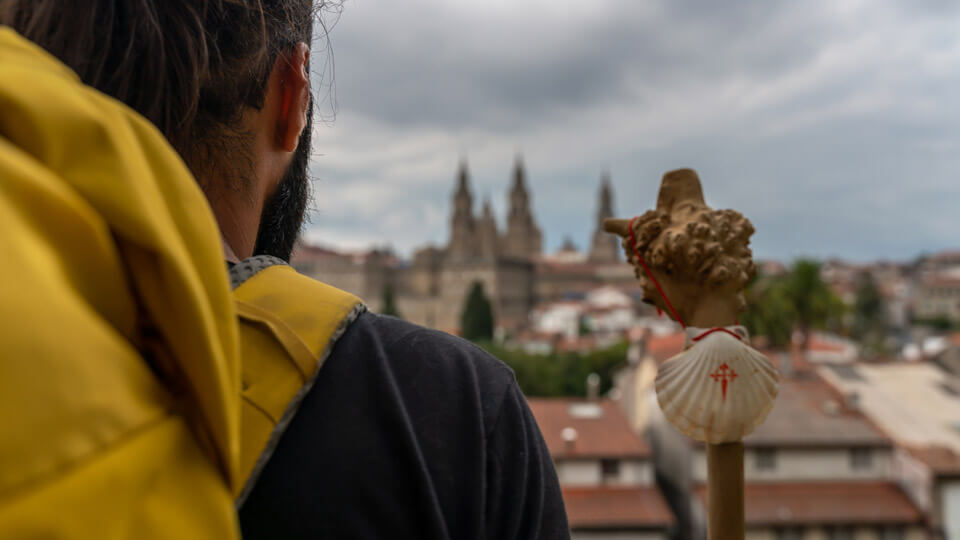
The Camino de Santiago history
After passing away, it is thought that St. James’s remains were taken from Jerusalem and brought to Spain. Then the apostle was buried in the place where Santiago de Compostela is nowadays.
According to the legend, the burial place was discovered by a shepherd who saw a bright light in the sky one night and then an archbishop discovered that St. James was buried there.
Later on, a cathedral was built in the same place. Soon thereafter, a victory over Moorish invaders was credited to St. James, so as the word spread about the saint’s good action, pilgrims started flowing in.
CAMINO DE SANTIAGO DISTANCE
If you are wondering how long is the Camino de Santiago or maybe how many miles is the Camino de Santiago, the short answer is that the Camino is 500 miles or about 800 kilometers long.
There are 9 main Camino routes
Many of these routes have a few variations because the Camino is made up of several Routes with different lengths, so you can decide how far you want to travel and for how long.
Camino de Santiago map
The Camino de Santiago is not just one route, but a network of routes. Starting with the Middle Ages, thousands of pilgrims walked from their homes to make a pilgrimage to Santiago de Compostela. This paved the way for many different routes across Europe, all arriving in the city surrounding the Cathedral of Santiago de Compostela.
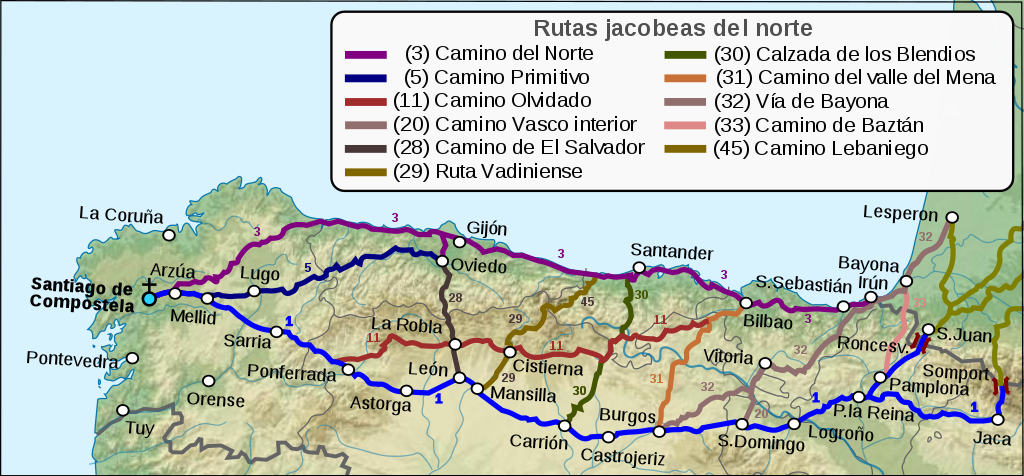
Photo: Author Paulusburg
If you want to take a closer look at the Camino de Santiago route map, visit this page where you can find more info about the possible routes, their length and other points of interest.
CAMINO FRANCÉS: THE FRENCH WAY
The French Way (Spanish: Camino Francés) is the most popular of the routes of the Way and it has the best infrastructure. It starts in St Jean Pied de Port, a small town in the Basque-French Pyrenees, and crosses the Pyrenees Mountain range, through some of the most beautiful cities and landscapes into northern Spain, to follow the pilgrimage across Spain to the west-end.
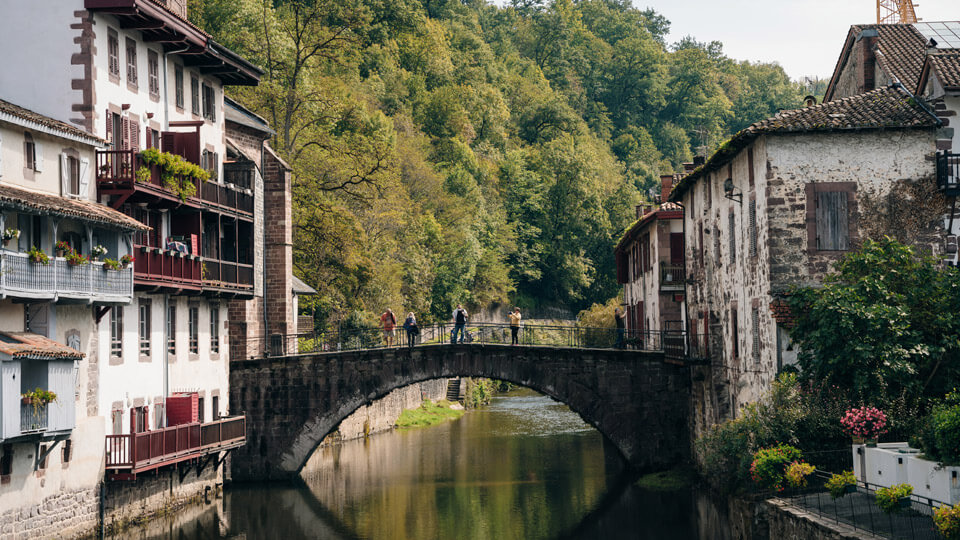
CAMINO DEL NORTE: THE NORTHERN WAY
The Camino del Norte (Northern Way) starts in The Basque Country, in the city of San Sebastian. Considered to be a more picturesque option for the French Way, this Way was used by pilgrims to avoid Muslim-occupied lands. It follows the northern coastline of Spain, offering amazing views of the sea and hard hiking. The main places that are crossed here are: Irun, France, San Sebastian, Guernica, Bilbao and Oviedo.
If possible, spend an extra night in the city of Bilbao. Here the famous Guggenheim Museum is a real highlight that you wouldn’t want to miss.
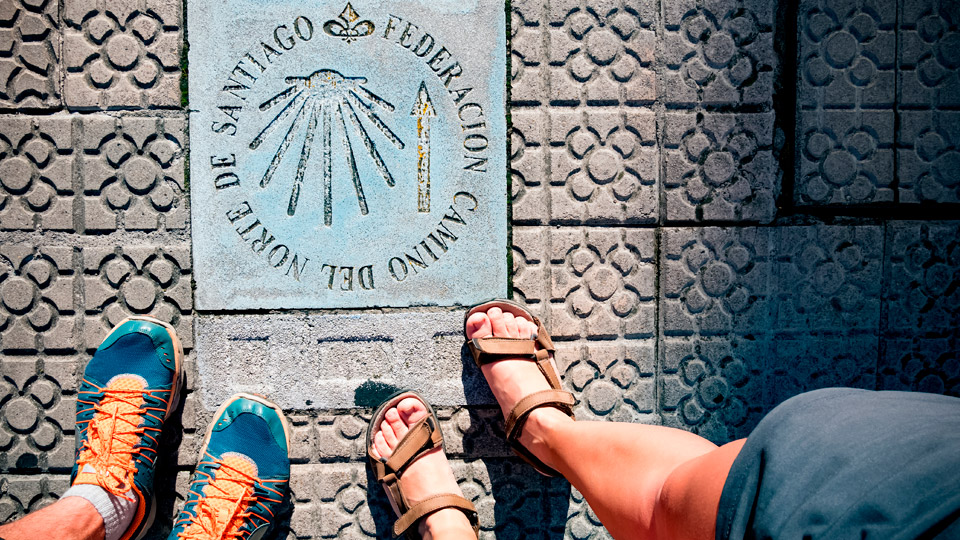
Take a dip into the Ocean on one of the fabulous beaches on this route
Some symbols to remember Camino de Santiago pilgrimage
The scallop shell
The scallop shell is the most well-known symbol associated with the Camino de Santiago. In ancient times, the Clergymen gave this shell to pilgrims on their arrival at Santiago de Compostela city as accreditation for completing their pilgrimage. Although now there are other ways to achieve one, the tradition of carrying the shell on the Camino are still alive.
The yellow arrow
Another very important symbol is the yellow arrow. This arrow guides pilgrims in the right direction and it is found on milestones, wooden sticks, walls, rocks, paths, and more along the Camino.
Its origin dates back to the 70s when a priest started to mark with a yellow arrow the route from the Pyrenees to Santiago de Compostela. He’s also the author of the first Camino guide published in the 80s.
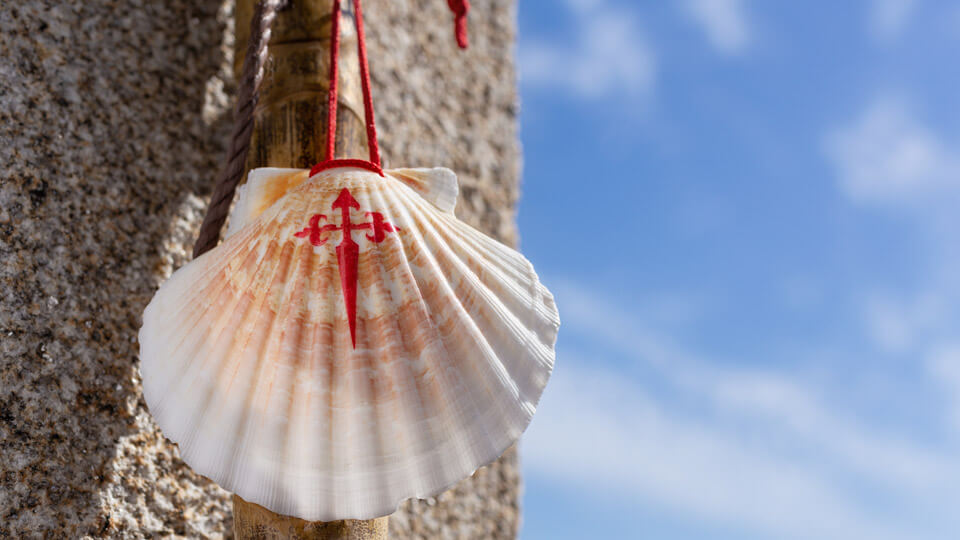
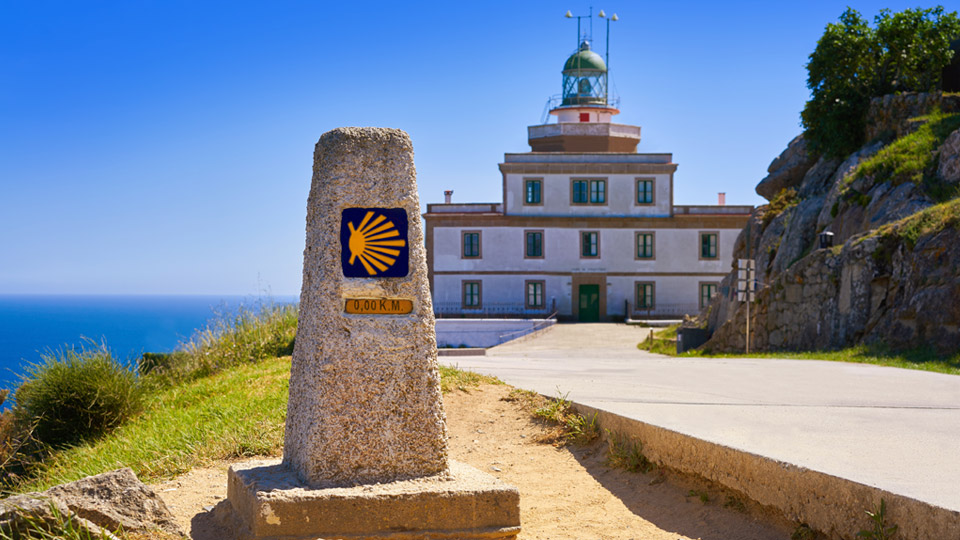
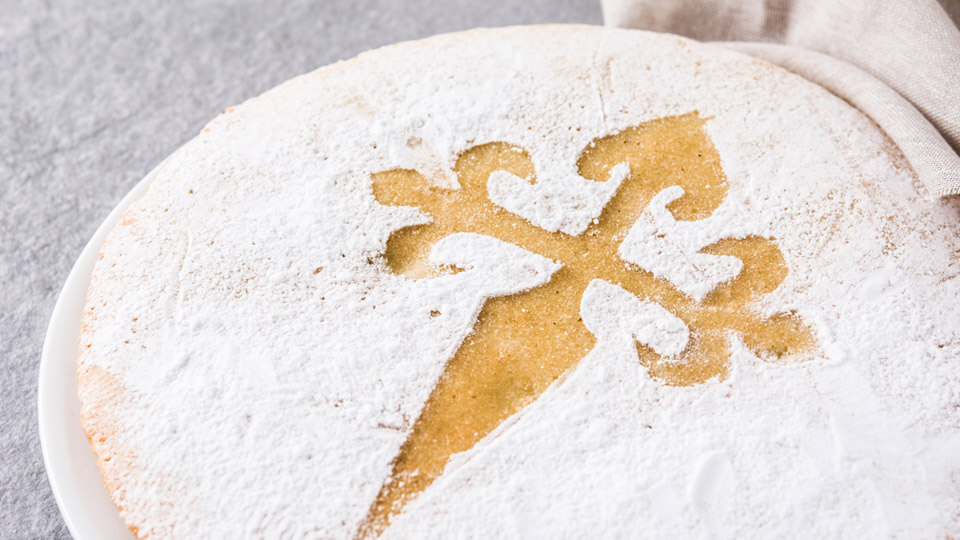
ABOUT THE YEAR OF JUBILEE
A Jubilee Year is also known as A Holy Year and its origins are in the Law of Moses. The word “jubilee” comes from the Hebrew word “yobel” which is a music instrument shaped as a horn and used to bring good news.
According to The Old Testament, a Jubilee Year takes place every fifty years: sins must be forgiven, lands should be given back to the owners and slaves should be set free. The Catholic Church modified this tradition, giving it a more spiritual sense: all Catholics will apologize for the sins committed renewing vows and finding God again.
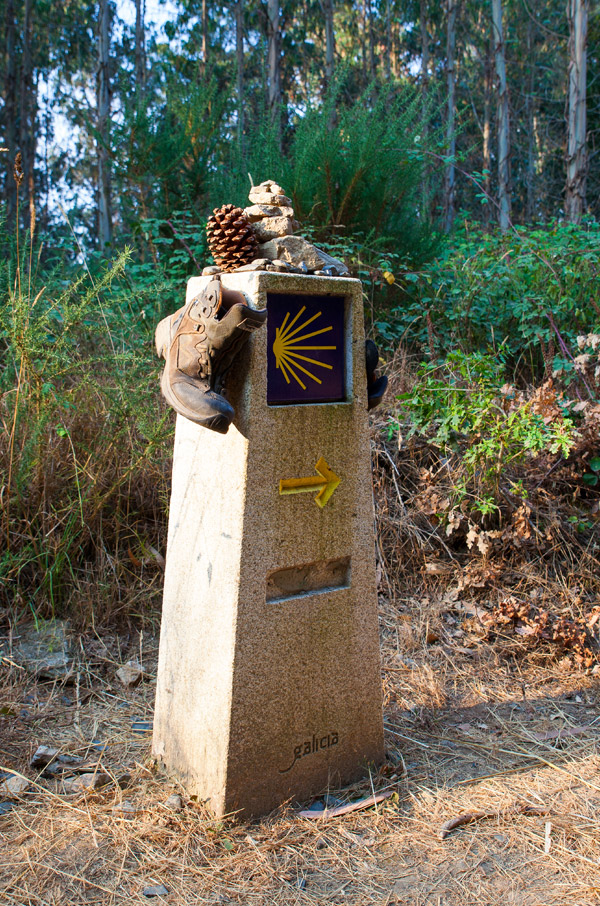
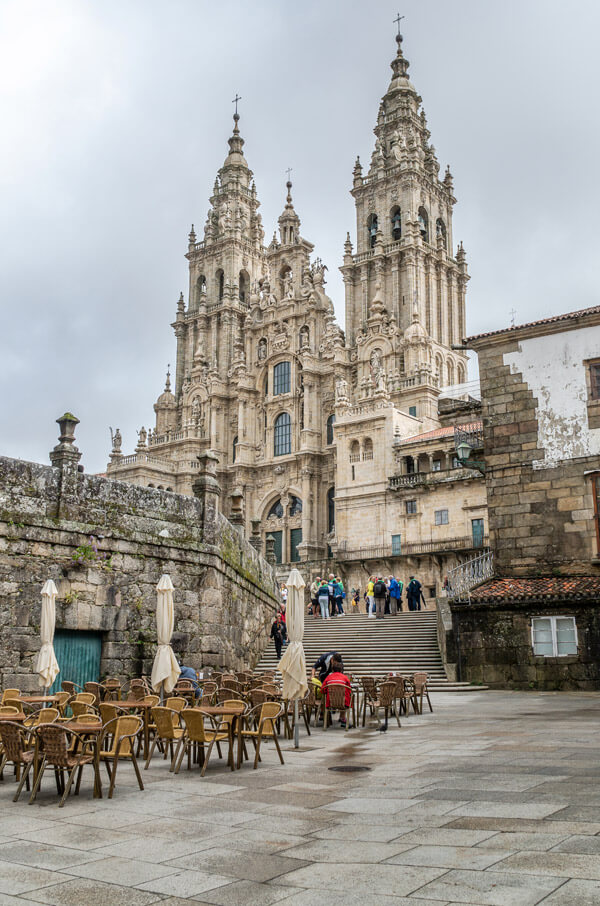
The Holy Year, also called Jacobean Year (Xacobeo 2021), happens when the feast day of St. James, July 25th, falls on a Sunday. This happens every 5, 6 or 11 years. The last Holy Year was in 2021, so the next Holy years will be: 2027, 2032, 2038, 2049.
BEING A PEREGRINO
The pilgrims can obtain the plenary forgiveness for their sins. Achieving it is what is known as the Jubilee. To do so, the pilgrims must comply with a number of rules established by the Church such as visiting the Cathedral of Santiago, praying and receiving the Sacraments of Penance (Confession) and Communion.
As for the pilgrim foods, we hope you won´t leave before trying the tasty meats and cheeses of the Pyrenees, the pintxos or the wines because you need to get your energy back and there’s no better way than trying the local fare.
Achieving the Jubilee is obtaining the total forgiveness for sins granted by the Church
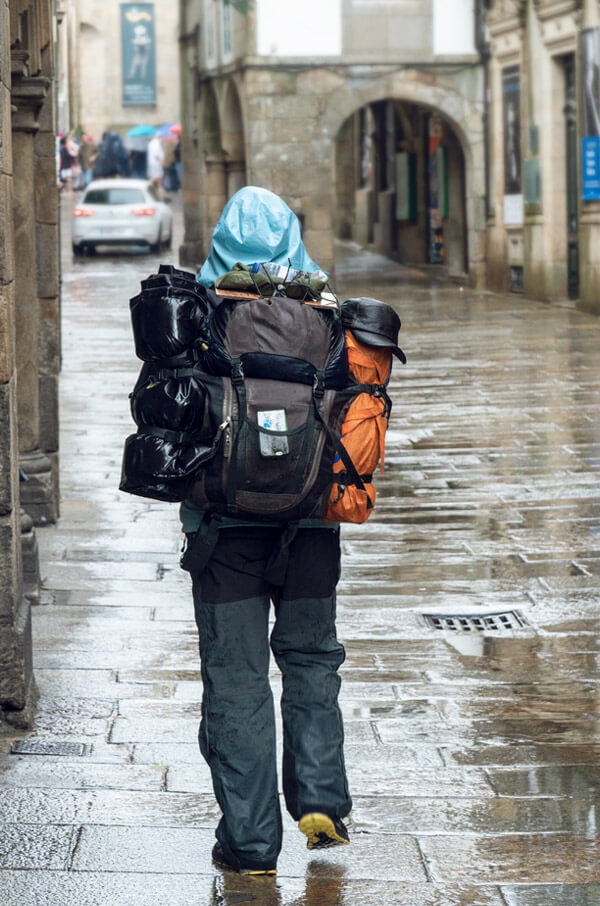
AN UNFORGETTABLE EXPERIENCE
A unique and exciting way to experience Spain, the Way of St. James is definitely among the top options. No matter the route you choose, you will follow the footsteps of untold numbers of believers.
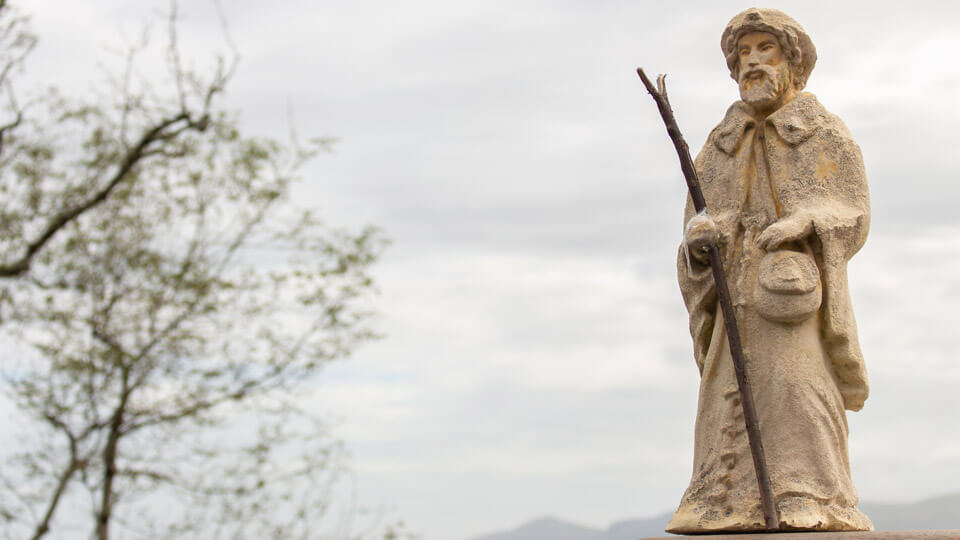
Beyond its religious and historical significance, the Way of St. James brings you through several villages and cities, so be sure to put this experience at the top of your list of travel possibilities in Spain!
